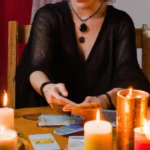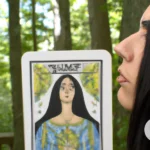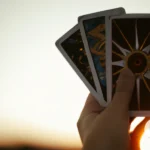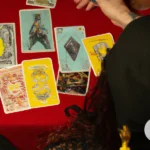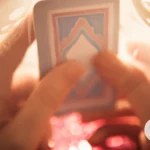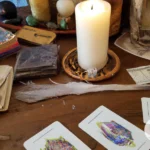Tarot cards have long fascinated and intrigued people with their cryptic symbols, intricate imagery, and mystic allure. But where did these mysterious cards come from? What was their purpose and how did they become a divination tool? In this article, we will explore the origins of Tarot from its early beginnings to its evolution throughout history. We will also decipher the symbolism of the cards and delve into the art of Tarot reading, including tips on how to intuitively interpret the cards. Whether you’re a seasoned Tarot reader or just curious about this enigmatic art form, join us on a journey through the history and symbolism of Tarot.
The Origins of Tarot
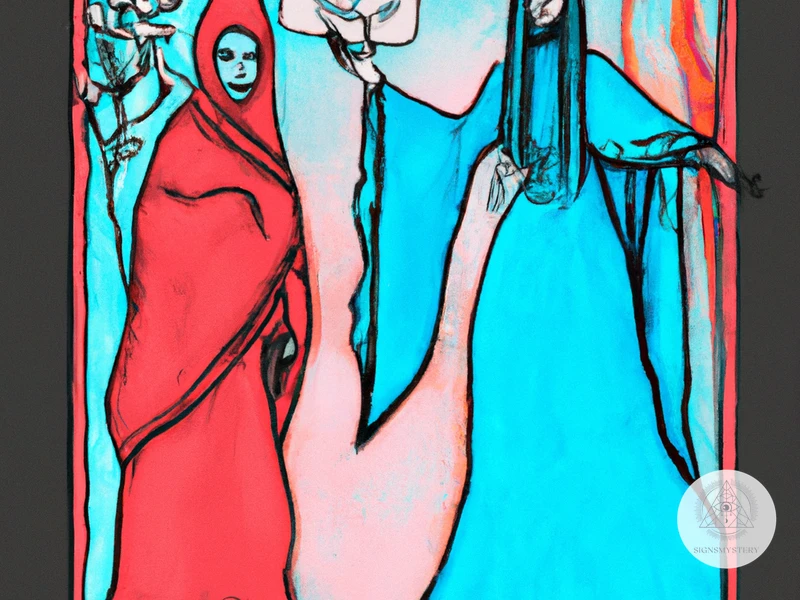
are shrouded in mystery and speculation. Some believe that the cards have their roots in ancient Egyptian or Indian cultures, while others point to the Italian and French courts of the Renaissance era. The first recorded mention of tarot cards dates back to the 15th century, when they were used for playing popular card games. However, it wasn’t until the 18th and 19th centuries that tarot cards gained popularity as a tool for divination and fortune-telling. Despite the debates surrounding their origins, tarot cards have become an enduring symbol of mysticism and have captured the imagination of people around the world. To learn more about the evolution of tarot popularity, the symbolism behind the cards, and the different tarot spreads used in readings, check out the relevant resources: Evolution of Tarot Popularity, Tarot Icons and Symbolism Study, Tarot Fortune-Telling in the 19th Century, and History of Tarot Spreads.
The First Tarot Cards
The exact origins of the first tarot cards are shrouded in mystery, with no definitive answer to their creation. However, the earliest known tarot-like cards date back to 15th century Italy, known as the Visconti-Sforza deck. This deck was commissioned for the influential Visconti family in Milan, and it featured intricately illustrated cards depicting various rulers, virtues, and allegorical scenes.
Another early example of tarot cards was the Tarot de Marseille, which began to emerge in France during the 16th century. This deck featured 78 cards with unique illustrations and was the first to separate the suits into Pentacles, Swords, Cups, and Wands.
Despite the uncertainty of their origins, scholars generally agree that the first tarot cards were not originally intended for divination purposes. Instead, they were believed to have been used for playing various card games popular in the medieval European era.
The cards of the first tarot decks were not standardized, and often varied greatly in the number and style of their illustrations. It wasn’t until the 18th century that attempts were made to standardize the designs and card meanings, leading to the creation of the Tarot de Marseille.
Although the first tarot cards were not created for divination, they soon began to be used for fortune-telling purposes. This practice became especially widespread during the 18th and 19th centuries, as various occult movements began to popularize the use of tarot cards in divinatory readings.
While the exact origins of the first tarot cards remain a mystery, they were likely created for playing card games and only later adapted for divinatory purposes. The early tarot decks were not standardized and varied greatly in design, but attempts were made to standardize them in the 18th century with the creation of the Tarot de Marseille.
The Rise of Tarot as a Divination Tool
During the mid-15th century, tarot cards began to be used as a divination tool and became widely popular among aristocratic families. At this point in time, tarot was still predominately played as a game, but it wasn’t long before their use in divination took over.
One of the first decks created specifically for divination purposes was the Visconti-Sforza tarot deck. It was commissioned by the Duke of Milan and created by an Italian artist named Bonifacio Bembo in the mid-15th century. This deck was unique because it included images of ancient gods and astrological symbols, paving the way for the use of tarot as a divination tool.
As people became more interested in using tarot for divination, other decks emerged, including the Marseille tarot and the Rider-Waite tarot, which became two of the most popular tarot decks in history. The Marseille tarot was brought to France by Italian soldiers during the late 15th century, and it quickly became popular among the French peasantry. This deck eventually became the standard for tarot reading in France.
The Rider-Waite tarot, created by Arthur Edward Waite and artist Pamela Colman Smith, was published in 1909 and quickly became a bestseller. This deck was unique because the images on the cards included intricate details and symbolism, making it easier for beginners to understand the meanings of each card.
As the popularity of tarot continued to rise, it also faced criticism and skepticism. In the late 18th century, tarot was even banned in some parts of Europe because it was considered to be a form of witchcraft. However, this only fueled the interest in tarot, and it continued to thrive despite the controversy surrounding it.
Today, tarot remains a popular divination tool and has even gained mainstream acceptance. Many people use tarot as a way to gain insight into their lives and make important decisions. As a result, tarot has become a timeless symbol of mystery and intrigue, and its popularity shows no signs of slowing down.
The Evolution of Tarot
The evolution of Tarot is a fascinating journey through time. In the Renaissance, Tarot transformed from a simple card game with symbolic images to a divination tool used by the occult community. During the Occult Revival, Tarot’s popularity soared, with people using it as a way to access higher knowledge and connect with the divine. In the modern era, Tarot has become a mainstream tool for personal growth and introspection, with many individuals using it as a means to gain insights into their lives and overcome obstacles. The evolution of Tarot is a testament to its timeless and enduring appeal, and to the power of symbolism and divination in our lives. As we continue to explore the depths of Tarot, we discover new ways to connect with ourselves and the world around us, and to discover the hidden truths that lie within.
Tarot in the Renaissance
During the Renaissance, the use of Tarot cards shifted from being a game to a tool for divination. It was during this time that the Tarot began to be associated with mystical and esoteric practices. The tarot decks of the Renaissance period had a greater emphasis on the Major Arcana cards, which were seen as having more significant symbolic meanings.
One of the most famous Renaissance Tarot decks was the Visconti-Sforza deck, which was commissioned by the Duke of Milan around the mid-15th century. This deck consisted of 78 cards, including 22 Major Arcana cards and 56 Minor Arcana cards. The cards were hand-painted and featured intricate designs and symbolism.
During the Renaissance, Tarot cards were often associated with alchemy, astrology, and Kabbalah. These mystical practices were popular among philosophers and intellectuals of the time, who believed that the Tarot cards could be used to gain insight into the divine nature of the universe.
The Tarot also became associated with the concept of Hermeticism, which was a philosophical and religious movement that emphasized the interconnectedness of all things in the universe. Hermetic philosophers believed that the Tarot cards were a key to understanding the principles of the universe, and that they could be used as a tool for spiritual enlightenment.
Despite its association with esoteric practices, the Tarot remained popular among all levels of society during the Renaissance. Tarot games were played by both the aristocracy and the common people, and Tarot decks were produced in a variety of styles and designs to suit different tastes and budgets.
The Renaissance period was a significant time in the history of Tarot, as it marked the transition of the Tarot from a game to a tool for divination and spiritual exploration. The Tarot’s association with mysticism and esoteric practices during this time helped to cement its place as one of the most enduring symbols of spiritual inquiry and self-discovery.
The Occult Revival and Tarot
During the late 19th and early 20th centuries, there was a growing interest in spirituality and mysticism. This movement, known as the “occult revival,” drew heavily upon esoteric traditions such as Hermeticism, alchemy, and Kabbalah. One of the tools used in these practices was the Tarot deck, which was seen as a powerful tool for divination and self-discovery.
Golden Dawn and the Tarot
One of the most significant groups to emerge from the occult revival was the Hermetic Order of the Golden Dawn. Founded in 1888, this organization sought to provide its members with a comprehensive understanding of the occult, drawing upon a variety of traditions and practices. One of the key components of their teachings was the use of the Tarot as a tool for divination and ritual.
Members of the Golden Dawn were encouraged to study the tarot extensively, and many of their leaders, such as S.L. MacGregor Mathers and A.E. Waite, went on to publish their own tarot decks and interpretations. Waite, in particular, is known for the Rider-Waite Tarot deck, which has become one of the most popular and widely recognized tarot decks today.
The Tarot and the Occult Today
While the occult revival faded in the mid-20th century, the practice of using tarot cards for divination and self-discovery has continued to grow in popularity. Today, there are countless tarot decks available, each with its own unique symbolism and interpretation.
Many people still draw upon the traditions of the occult revival when using tarot cards, employing practices such as meditation, visualization, and ritual to enhance their readings. However, the use of tarot cards has also expanded into other areas, such as psychological counseling and life coaching.
The occult revival played a significant role in the evolution of the tarot, and its influence can still be seen today. Whether used as a tool for divination or simply as a means of self-exploration, the tarot remains a powerful and fascinating aspect of the mystical and spiritual world.
Tarot in the Modern Era
In the modern era, Tarot has experienced a resurgence in popularity, with many people turning to it as a means of spiritual guidance and self-discovery. Some of the key developments of Tarot in the modern era include:
- The Rider-Waite-Smith Tarot Deck: In 1909, the Rider-Waite-Smith Tarot deck was published, which featured illustrations by artist Pamela Colman Smith and was designed by occultist Arthur Edward Waite. This deck became one of the most popular and influential in the Tarot tradition, and it remains a staple of the Tarot community today.
- Tarot and Psychology: In the mid-twentieth century, Tarot began to be seen as a tool for psychological exploration and personal growth, rather than simply a divination tool. This led to the development of Tarot counseling and Tarot therapy as practices.
- Tarot and Pop Culture: Tarot has also made its way into pop culture, with references in music, film, television, and literature. For example, the 1990s television series Twin Peaks featured Tarot prominently in its plot.
- Tarot Online: With the advent of the internet, Tarot has become more accessible than ever before. There are now countless websites and apps dedicated to Tarot, offering virtual readings and resources for beginners and experienced practitioners alike.
The modern era has also seen Tarot gain more mainstream acceptance, with Tarot readers and teachers offering their services at wellness spas, yoga studios, and other holistic health centers. Tarot has also been the subject of academic study, with scholars exploring its origins, symbolism, and psychological implications.
Despite its long history and the many changes it has undergone, Tarot remains an intriguing and enigmatic practice that continues to captivate and inspire people around the world.
The Symbolism of Tarot
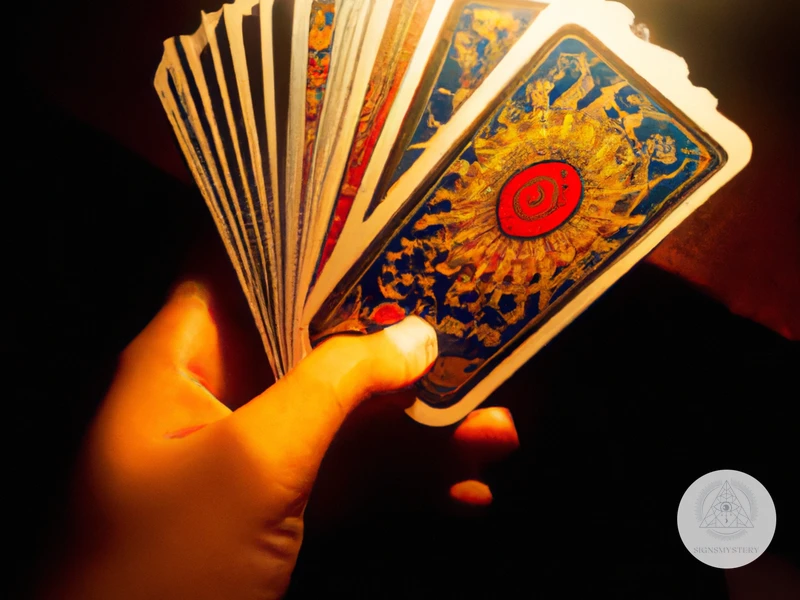
Tarot cards are rich with symbolism, and each one holds a significant meaning. The Major Arcana represents significant events or concepts, such as The Fool symbolizing courage and taking risks, or The Tower representing sudden change or upheaval. The Minor Arcana cards are divided into four suits, each with its own symbolism: Pentacles relate to money and material possessions, Cups are connected to emotions and relationships, Swords represent challenges and conflicts, and Wands are linked to creativity and inspiration. Additionally, each card has its own distinct symbolism, such as The Magician representing manifestation and power, or The High Priestess representing intuition and secrecy. Understanding the complex symbolism of the Tarot takes time, patience, and careful attention to detail, but it can provide a deeper level of insight and meaning in readings.
The Major Arcana
The Major Arcana is one of the two main categories of tarot cards, the other being the Minor Arcana. The Major Arcana consists of 22 cards, each with its own unique meaning and symbolism. These cards are often said to represent the major life lessons or milestones that one may experience throughout their journey.
The Major Arcana cards are numbered from 0 to 21, with each card typically featuring a symbolic or allegorical image. Some of the most recognizable and iconic cards in the Major Arcana include the Fool, the Magician, the High Priestess, the Empress, the Emperor, the Hierophant, the Lovers, the Chariot, Strength, the Hermit, the Wheel of Fortune, Justice, the Hanged Man, Death, Temperance, the Devil, the Tower, the Star, the Moon, the Sun, Judgment, and the World.
Each of these cards has a specific meaning and represents different aspects of the human experience. The Fool, for example, represents new beginnings, innocence, and a willingness to take risks. The Magician represents manifestation and the power of transformation. The High Priestess embodies intuition and inner guidance, while the Empress represents nurturing, creativity, and abundance.
The Major Arcana cards can be read individually or as a part of a larger tarot spread. They are often interpreted in combination with the Minor Arcana cards to provide a more complete picture of a situation or question.
One important thing to note about the Major Arcana is that they are often associated with spiritual or metaphysical themes. They are often used to explore the deeper aspects of human nature, and can help individuals tap into their intuition and inner wisdom.
The Major Arcana represents some of the most profound and transformative experiences that one can encounter on their journey through life. By understanding the symbolism and meaning behind these cards, individuals can gain profound insights into themselves and the world around them.
The Minor Arcana
The Minor Arcana is a crucial part of the Tarot deck and plays an essential role in providing guidance and insight. It consists of 56 cards and is divided into four suits – Cups, Swords, Pentacles, and Wands. Each suit corresponds to significant aspects of life, such as emotions, intellect, material objects, and creativity.
Cups: The Cups represent emotions, love, relationships, and creativity. They portray our struggles and triumphs in matters of the heart and reveal our deepest desires, fears, and hopes.
Swords: The Swords symbolize our intellect and
Subscribe to Our Newsletter
Sign up to receive the latest news and updates.
Pentacles: The Pentacles are associated with material things, practicality, money, and work. These cards highlight our skills, abilities, and resources and reveal our ambitions for success.
Wands: The Wands are connected to creativity, passion, and drive. They represent our adventurous spirit and enthusiasm for life and can help us discover our purpose and ambitions.
In addition to the four suits, the Minor Arcana includes court cards – Pages, Knights, Queens, and Kings – which represent people in our lives or aspects of ourselves. These cards add depth and meaning to a reading and offer unique insights into our relationships, strengths, and weaknesses.
When reading the Minor Arcana, it’s essential to consider the cards’ meanings in relation to the question being asked and the context of the reading. Each card has a unique interpretation and can combine with other cards to create a more profound meaning.
The Minor Arcana holds significant importance in Tarot readings, allowing us to delve into the complexities of our lives and gain insights into various aspects. The cards’ symbolism and interpretations provide a window into our thoughts, feelings, and actions, highlighting opportunities and challenges we may face ahead.
How to Read Tarot
Reading tarot cards can seem daunting for beginners, but with some practice and patience, anyone can learn to interpret the symbolism and gain valuable insights from a tarot reading. One approach to understanding the meanings of tarot cards is to start with the Major Arcana, which represent universal archetypes and provide a big-picture view of a situation. The Minor Arcana, on the other hand, focus on specific aspects of life and can provide more detailed information. Reading tarot spreads, or patterns of cards laid out in a certain order, can also provide a framework for interpretation. Whether relying on intuition or book meanings, it’s important to approach tarot with an open mind and a willingness to explore the deeper meanings and messages of the cards.
Understanding the Meanings of Tarot Cards
When it comes to understanding the meanings of Tarot cards, there are a few things to keep in mind. First and foremost, it is important to understand the symbolism associated with each card. Each card in a Tarot deck represents a different archetype or aspect of human experience, and understanding the symbolism can give valuable insights into the meaning of the card.
Another important factor to consider when interpreting Tarot cards is the position of the card in the spread that is being used. A card’s meaning can change depending on where it falls within the spread, as well as which other cards it is appearing alongside.
It is also important to trust your intuition when it comes to interpreting Tarot cards. While it can be helpful to refer to books or online resources for guidance, ultimately the meaning of each card will be influenced by the unique circumstances and experiences of the person conducting the reading.
One common approach to understanding the meanings of Tarot cards is to study traditional interpretations and symbolism, while also incorporating your own insights and understandings. This combination of tradition and intuition can lead to rich and nuanced interpretations that are uniquely suited to the individual conducting the reading.
When it comes to understanding the meanings of Tarot cards, it is important to approach each reading with an open mind and a willingness to engage with the symbolism, position, and intuition associated with each card. With practice and dedication, Tarot reading can become a powerful tool for gaining insight and clarity in all aspects of life.
Reading Tarot Spreads
Reading Tarot Spreads is a vital part of the process of Tarot reading. A Tarot spread refers to a specific configuration of Tarot cards that can be used to gain insight into a particular question or situation. There are numerous types of Tarot spreads available, and each one has a unique purpose. Some of the most common types of Tarot spreads include the three-card spread, the Celtic Cross spread, and the Horseshoe spread.
The Three-Card Spread: The three-card spread is one of the simplest Tarot spreads and consists of three cards placed side by side. The first card represents the past, the second represents the present, and the third represents the future. This spread is used to gain insight into a specific question or situation.
The Celtic Cross Spread: The Celtic Cross spread is a more complex Tarot spread, consisting of ten cards arranged in a cross pattern. This spread is used to gain insight into the questioner’s past, present, and future, as well as the factors influencing their decision-making process. Each card in the spread represents a different aspect of the question or situation, such as obstacles, hidden influences, and potential outcomes.
The Horseshoe Spread: The Horseshoe spread is another popular Tarot spread that consists of seven cards arranged in the shape of a horseshoe. This spread is used to gain insight into a specific question or situation and is particularly helpful for exploring relationships. Each card in the spread represents a different aspect of the question or situation, such as the questioner’s feelings, the other person’s feelings, and potential obstacles.
When reading Tarot spreads, it is important to consider each card in relation to the other cards in the spread and the question or situation being explored. The placement of each card in the spread also carries significance and can influence the interpretation of the card’s meaning. Ultimately, reading Tarot spreads requires a combination of intuition, knowledge of Tarot symbolism, and the ability to interpret the cards in context.
Intuition vs. Book Meanings
When it comes to reading tarot cards, there are two schools of thought: following the book meanings and relying on intuition. Book meanings provide guidelines for interpreting the cards, based on traditional interpretations. On the other hand, relying on intuition means reading the cards based on one’s impressions of what the cards mean, without preconceived notions.
Some tarot readers prefer to use a combination of both methods when interpreting tarot cards. They follow the book meanings to provide a framework for understanding the card, but also allow their intuition to guide them in interpreting the nuances of a card’s meaning. Others prefer to rely solely on intuition, believing that the cards possess a unique energy that they can tap into.
Regardless of which school of thought a tarot reader follows, it is important to remember that tarot reading is a highly personal form of divination. The interpretation of a card’s meaning will vary depending on the reader’s understanding and connection to the cards. It’s also worth keeping in mind that tarot reading is not a science, and there are no right or wrong interpretations of a card.
That being said, learning the traditional meanings of tarot cards is still an important foundation for any tarot reader. Familiarizing oneself with the symbols and meanings of each card can provide a solid starting point for interpreting the cards. However, it’s also important to remain open to one’s intuition and allow that to guide the interpretation of the card.
To summarize, tarot reading is a personal journey that relies on a mixture of both book meanings and intuition. Tarot readers are free to choose which approach works best for them, with the understanding that there are no definitive answers in this form of divination.
Conclusion
While the origins and evolution of tarot have been explored in this article, its timeless appeal is truly what keeps it relevant today. Tarot serves as a tool for self-discovery, offering insight and guidance into our innermost thoughts and emotions. Whether one uses the traditional Rider-Waite-Smith deck or explores the countless variations and interpretations that now exist, the meanings of tarot cards continue to resonate with people all over the world. It is up to the individual to tap into their own intuition and understanding of the symbols present in the cards. The symbolism of tarot is vast, with each card offering a unique journey and story. With the use of tarot spreads and a deep connection to one’s intuition, anyone can uncover profound insights and wisdom. The appeal of tarot is truly timeless, as it offers a glimpse into the mysteries of life and the human experience.
The Timeless Appeal of Tarot
When it comes to the timeless appeal of Tarot, it’s all about the magic and mystery that surrounds this ancient divination tool. People have been drawn to Tarot for centuries, seeking answers to life’s burning questions and gaining insight into their own spiritual paths.
One of the key reasons for Tarot’s enduring popularity is the intricate symbolism and rich imagery contained within each card. The Major Arcana and Minor Arcana cards are packed with meaning and hidden wisdom, allowing the reader to delve deep into the collective unconscious and tap into higher realms of consciousness.
Another reason why Tarot has stood the test of time is its flexibility. While some people use Tarot purely for divination purposes, others see it as a tool for personal growth and self-reflection. The cards can be used to explore complex emotional issues, uncover hidden patterns and beliefs, and gain clarity on life situations.
Tarot has a certain allure that is hard to resist. From the beautiful illustrations to the mysterious atmosphere that often surrounds Tarot readings, it’s easy to see why so many people are drawn to this ancient art. Tarot offers a sense of intrigue and excitement that is unmatched by other forms of spiritual practice.
Ultimately, the timeless appeal of Tarot boils down to its ability to connect individuals to their inner selves and to something greater than themselves. Whether seeking guidance on a particular issue or simply hoping to deepen their understanding of the world, Tarot has something to offer everyone who is willing to open themselves up to its magic and mystery.
Frequently Asked Questions
1. What is the earliest known deck of Tarot cards?
The earliest known deck of Tarot cards is the Visconti-Sforza deck, which was created in Italy in the 15th century.
2. Were Tarot cards originally used for divination?
No, Tarot cards were originally created as playing cards and were not used for divination until later on.
3. Are Tarot cards associated with a specific religion or belief system?
No, Tarot cards are not associated with any specific religion or belief system, but rather they have been used in a variety of spiritual practices over time.
4. Can anyone learn to read Tarot cards?
Yes, anyone can learn to read Tarot cards with practice and dedication to understanding the symbolism and meanings of each card.
5. Are there different styles of reading Tarot cards?
Yes, there are many different styles of reading Tarot cards, as well as various spreads that can be used in the reading process.
6. Is Tarot reading a form of fortune-telling?
Tarot reading can be a form of fortune-telling, but it can also be used for spiritual guidance and self-reflection.
7. Should I be worried about receiving a negative Tarot reading?
No, a negative Tarot reading should be seen as an opportunity for growth and to take control of one’s life. It is not a prediction of an inevitable outcome.
8. How can Tarot cards help me in my daily life?
Tarot cards can provide insights and guidance that can help you make decisions and navigate challenges in your daily life.
9. Is it necessary to be psychic to read Tarot cards?
No, being psychic is not a requirement for reading Tarot cards, but having a strong intuition can be helpful in interpreting the meaning of the cards.
10. Can Tarot cards be used in combination with other spiritual practices?
Yes, Tarot cards can be used alongside other spiritual practices such as meditation, yoga, and journaling.



